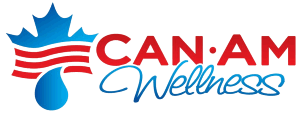Air Articles
Your online guide to air purifiers: Learn the basics before you buy
For most people, buying air purifiers is very confusing. HEPA filters, negative ionizers, electrostatic precipitators– the terminology alone sounds like a foreign language!
Not to worry though, we’ve broken down the whole, convoluted world of air purifiers into one, straightforward page covering the basics. From here, you can check out other pages on aspects that interest you, or go straight to our air purifier page for specific recommendations. Here we go!
Why air purifiers are needed
Air purifiers have become very widespread over the years due to several factors. Over the last 20 years the number of people with asthma has increased 100 times. It is also estimated that now 1 out of every 3 adults and children have either asthma or allergies. Why is this? Why has the EPA (Environmental Protection Agency) declared indoor air quality as the nations worst environmental health problem? Why did The Canadian College of Allergies recently announce that 50% of all illness is aggravated or caused by polluted indoor air?
The main reason is the insulation of homes and offices in response to the energy crisis in the 1970s. To save on energy costs, and for other reasons, indoor spaces are now tightly insulated. These air-tight, energy-efficient indoor spaces are perfect for trapping in all kinds of pollutants and particles.
Our respiratory tracts struggle daily against the contaminants that are in the air. Poor air quality causes headaches, digestive problems, fatigue, restlessness, congestion, and many other health problems. This is why there is such a need for air purifiers in most indoor environments.
What air purifiers clean
Air purifiers attempt to eliminate or reduce a host of airborne contaminants.
Here is a list of the most common elements that are found in the air of most homes, schools, and offices:
- Dust
- Pollen
- Animal Dander
- Mold
- Mildew
- Dust Mites
- Viruses
- Bacteria
- Tobacco Smoke
- Chemicals
- Germs
The sources of these pollutants are many. They include dust, people, animals, carpet, plywood, mattresses, furniture, cleaning products, aerosol, humidity, food, and insecticides.
Benefits of air purifiers
Good air purifiers will generally make an immediate difference in the lives of most people. After using an air purifier, many people report sleeping better, having more energy, being more alert, being more creative, breathing better, and just feeling better overall.
Technologies available in air purifiers
Due to advances in science and technology, there are now four methods that are used in air cleaners. Most air purifiers use more than one technology to better clean the air. Most of the machines recommended in our air purifier reviews section, utilize more than one of these:
- HEPA – a specially designed filter effective against many particles.
- Ionic- electronically charges particles causing them to attract to collector plates or fall to the floor.
- Ozone Generator – creates ozone, which seeks out contaminants.
- Carbon Filter – removes chemicals, fumes, and smoke.
We’ve created separate pages for each of these air purifier technologies should you want more detailed information. We suggest you check each of them out.
What to look for in an air purifier
OK. We know that air purifiers are necessary and we know why we need them and what they can do. Now, we’ve assembled a list of things to consider when searching for an air purifier for your home or office.
- Appropriate room size : Make sure the air purifier can change the air several times an hour.
- Air filtering efficiency: Obviously, you want a air purifier that effectively cleans the air.
- Air purification technology: Which of the four technologies does the unit use.
- Noise level: You want this to be as low as possible, but realize some of the better air purifiers do make noise. Quieter doesn’t necessarily mean better.
- Cost of replacement parts: Find out what it costs to replace filters and other parts
- Electricity costs: Know how much it costs to run an electronic air cleaner.
- Warranty: Learn about the warranty available for the unit you are considering.
- Indicator lights for filter changes: Some units have this, it’s not necessary but is very convenient
- Separate filters: Does the unit have a pre-filter to increase HEPA filter efficiency.
- Size and look of the air purifier: Some air purifiers are big and ugly, others are sleek and pleasing to the eye.
Summary
Hopefully this page has given you a solid, helpful introduction to air purifiers and what they can do. Everyday, it seems many people and the medical community are becoming increasingly aware of the need for clean air.
